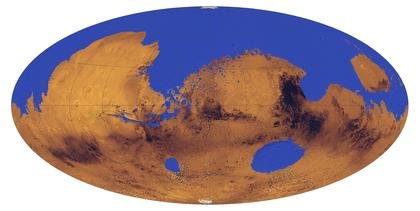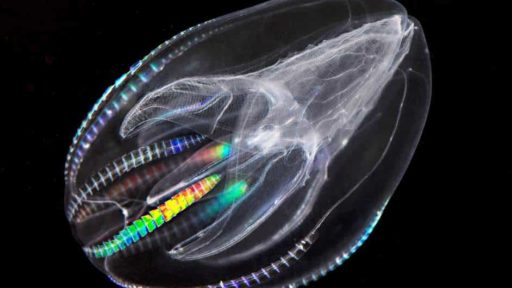Scientists at Colorado University-Boulder, analyzing data collected by NASA, have concluded that a massive ocean covering one-third of the planet’s entire surface existed on Mars 3.5 billion years ago. The scientists aren’t the first to suggest that Mars was once home to large oceans, but their research does support earlier assertions to that effect, assertions that have been challenged repeatedly over the years. The study is the first to mash up a huge body of data collected by NASA and ESA missions over the last decade. That data suggests Mars at one point had a hydrological cycle not too different from our own, including cloud formation, groundwater accumulation, and precipitation.
The ocean — which likely covered about 36 percent of the planet and contained 30 million cubic miles of water, about ten times less than Earth’s oceans — was fed by at least 52 river deltas which were in turn fed by countless river valleys and tributaries. Half of those deltas were at similar elevations, most likely marking the ocean’s boundaries.
Those deltas, identified by various orbiting missions analyzing the Martian surface, are more than just boundary markers for an ancient ocean. On earth, river deltas are fantastic preservers of the evidence of past life, and researchers think that if there’s a good place to uncover microbial evidence of past life on Mars, those deltas are prime candidates.
Of course, if the researchers really have answered the question of Mars’ oceanographic past, they’ve asked several more, most notably: where did all that water go? The Mars Atmosphere and Volatile Evolution Mission (MAVEN), quarterbacked by CU-Boulder researchers, will launch in 2013 to try and answer those questions.
Source: Popular Science.




